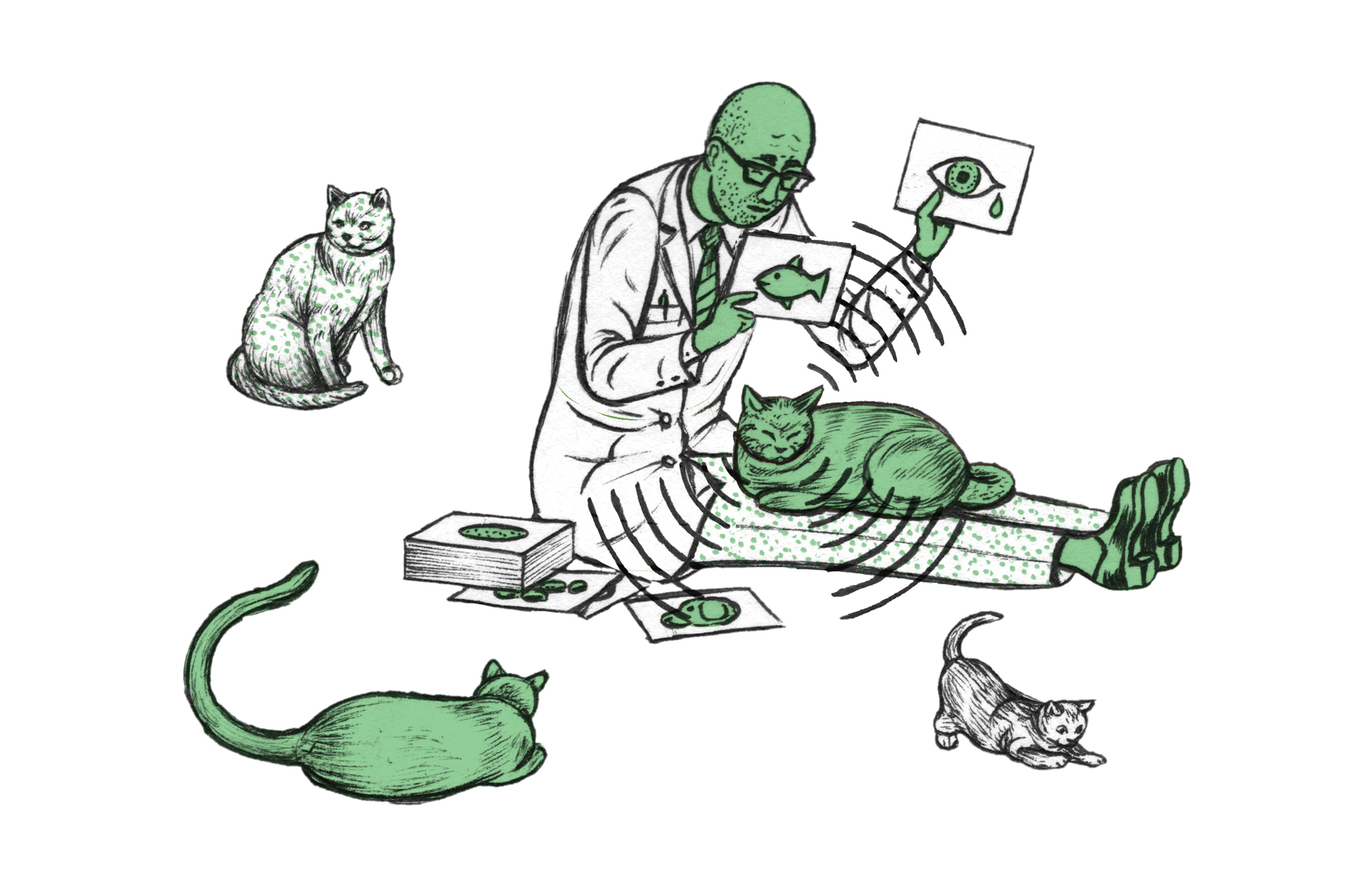

Carlo Siracusa is a professor of Clinical Animal Behavior at the University of Pennsylvania. This is his story from the field as told to Marion Renault.
Domestic cats communicate to other felines with gestures like pupil dilation and skin twitching. Because we humans are bad at decoding this subtle language, our pets have learned to use other types of cues with us. Purring falls in that category, but after about nine thousand years living together, we’re still not sure what it means.
It isn’t necessarily a sign of contentment, as most people think. Our furry companions will purr at the vet, but they’re not exactly happy to be squeezed and examined. On the contrary, they may be saying, “I’m vulnerable, help me.” We call this an et-epimeletic behavior, which animals use to demand care and attention—oftentimes from a mother, but possibly from their human.
There are other theories about this delicate rumble. One is that its frequency promotes soft tissue and bone healing in injured felines. Others suggest this characteristic hum is a recent evolutionary adaptation in house cats, who might be using the relaxing effect those low vibrations have on their owners to encourage the human guardians to care for and protect them.
Unfortunately, there’s no data backing any hypothesis over another, and a lot depends on personality, too. With my cat, Elsa, you never know: She might bite or swipe—even shortly after purring.
This story appears in the Fall 2020, Mysteries issue of Popular Science.
